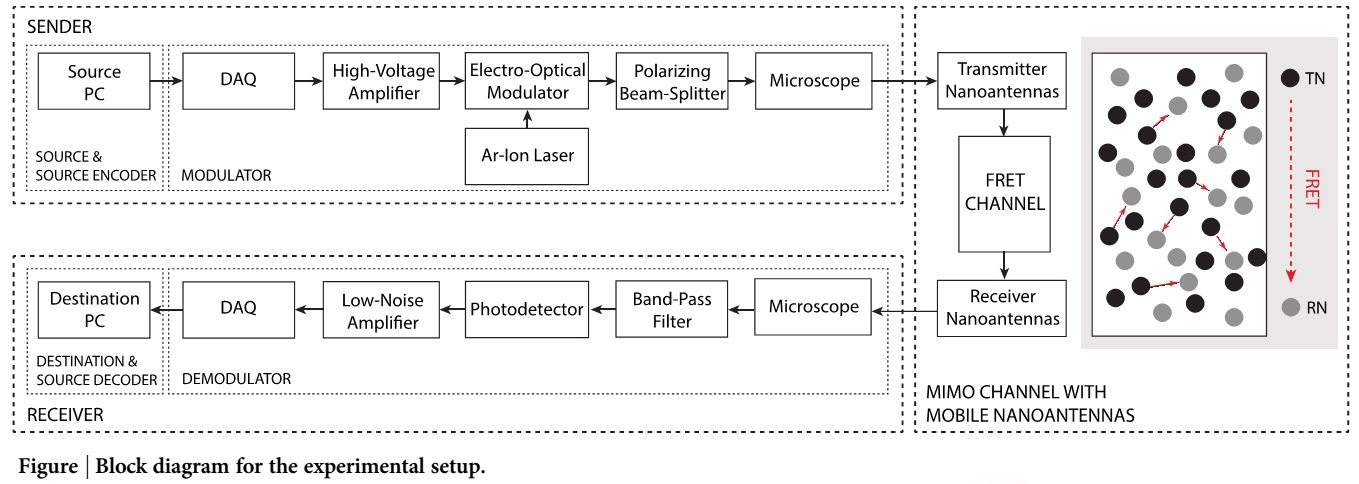M. Kuscu, A. Kiraz, O. B. Akan, "Fluorescent Molecules as Transceiver Nanoantennas: The First Practical and High-Rate Information Transfer over a Nanoscale Communication Channel based on FRET," Nature Scientific Reports, vol. 5, pp. 7831, January 2015.

For the information to be transmitted, we prepared a 28s-length audio sample taken from a popular song named “House of the Rising Sun” by Bob Dylan. The audio is sampled at 22050Hz, and converted to monaural, i.e., single-channel, at the source PC. The source encoding is performed at the source PC through a simple uniform quantization with 8-bit/symbol, and a continuous binary bit sequence is generated. As in the previous test, no channel coding is applied in order to explicitly extract the channel characteristics. The transmission rate is set to 176.4kbps which is the real-time processing rate of the audio, therefore, the system provides concurrent decoding and audio playing. The demodulation threshold voltage for the OOK-modulated signal is set to 0.200V, which is the optimal threshold value of the 150kbps-transmission case. Applying the threshold, the electrical output of the photodetector is demodulated, and the resultant binary datastream is converted to an analog waveform through the reverse quantization. The reconstructed audiostream is played at the destination PC.
The waveforms of the transmitted and the received audiostreams are compared in the movie. Overall we transmitted 5M bits, and 863 bits are erroneously demodulated at the receiver, which results in an error rate of 1.73e−4. As is seen in the movie, the waveform of the received audiostream contains some atypical spikes. These spikes are originated from the bit errors which occurs at the start of the 8-bit-length symbols. Because of the uniform quantization, this type of errors results in a significant alteration in the sampled audio level. In fact, these errors can be easily avoided by a simple channel coding method, e.g., block coding.

